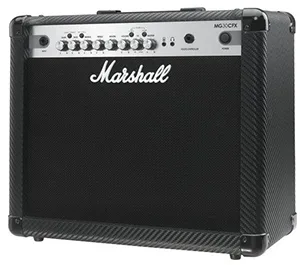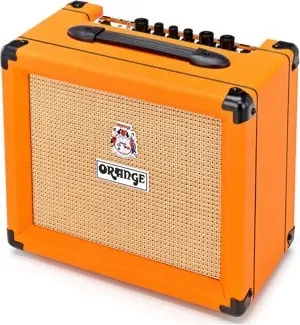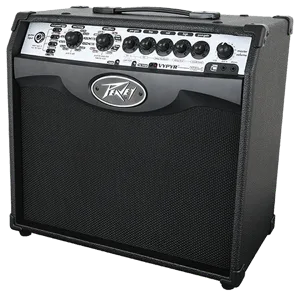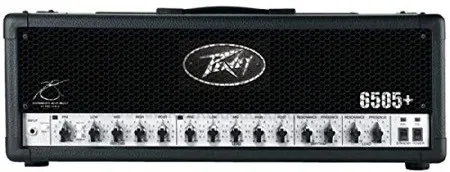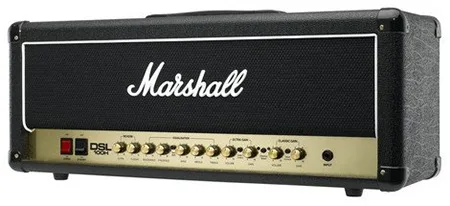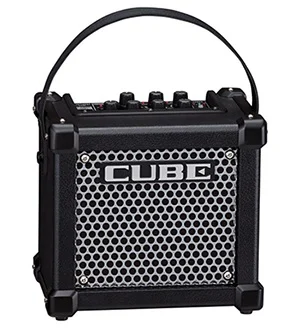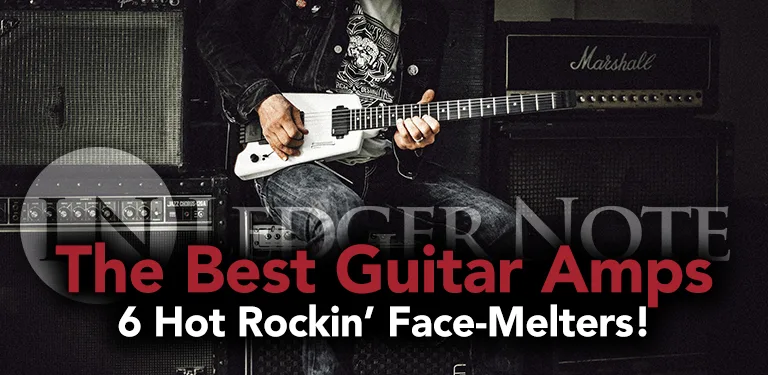
If you’ve just bought yourself your first electric guitar, you’re probably in that state of excitement that’s hard to describe. The truth is, that’s only the beginning.
Now it’s time to find yourself a good amp that’ll really show you the sounds your brand new six-string is capable of producing.
The models listed are by far some of the best you can find. Keep in mind that the selection was so large that expanding our list ten times in size wouldn’t be enough.With that said, you really can’t go wrong with any of these, especially our head amp picks. We recommend these as the best until you’ve developed preferences, and even then you don’t have to stray from the list.
They take care of everybody’s needs. If you’re on the hunt for the best beginner guitar to match your new amp, we’ve got you covered there, too.
There’s always something to learn about amplifiers and the winds of change always have the forums talking about some new model coming into favor. But the classics will always have your back! New and exciting things come out all the time, but these are the tried, proven, and best guitar amps you’ll find.
At the end of the article you’ll find a FAQ section with useful info to help you decide what kind of amp you need. We hope that you’ve found this guide helpful and urge you to do as much additional research as you feel you need.
Need more information in order to better understand your needs? We have got you covered! Visit our FAQs section.
INCLUDED IN THIS GUIDE:
| MARSHALL MG50CFX | Best of the Best | Buy on Amazon |
| ORANGE CRUSH 20 | Best Budget Pick | Buy on Amazon |
| PEAVEY VYPYR VIP 2 | Best Bang for the Buck | Buy on Amazon |
| PEAVEY 6505+ | Best for Peavey & Eddie Van Halen’s Collaboration Masterpiece | Buy on Amazon |
| MARSHALL DSL100H | Best Neutral Amp With the Classic Marshall Tube Sound… | Buy on Amazon |
| ROLAND MICRO CUBE | Best Travel Amp | Buy on Amazon |
Best Guitar Combo Amps
Now that we know what guitar amplifiers are and what flavors they come in, let’s check out some models. The first type we’ll focus on is the combo amps group. Three models listed below are what we consider to be great choices in this class.
While there are tons of models that could make the list, we had to choose the no-brainers that will be a win for everyone hunting in each category. Make sure to check out the other models in each series if you want some extra bang for your buck.
MARSHALL MG50CFX
Marshall’s combo amps have always been a safe choice. With them, you generally don’t have to worry about quality, even with cheaper models such as this one, as they all rock sufficiently. What’s awesome about the Marshall MG50CFX and the rest of the MG series is the fact that they have managed to capture the core of that classic Marshall tone at such an affordable price.
The one we are looking at today is a solid state amp that packs some 50 Watts of power. That is plenty enough for home use, practice, and live gigs, all packed into an affordable choice for beginners who don’t need an insanely huge amp or aren’t sure they’ll play forever, but without sacrificing on quality. If you decide to start gigging, this beast will serve you well in nearly any sized venues, like bars and restaurants, in terms of volume.
In large venues like an auditorium it can still work since you’ll likely be miked at that point. Other options in this series include 15, 30, and 100 Watt models. If you plan on playing live, I’d make stick to the 50 Watt version, which will cover you in any sized venue.
When it comes to features, there are several things worth mentioning from this line-up. First thing first, it comes with four different channels. There are no twenty built in distortions like on modeling amps, but Marshall’s solution is arguably more stylish.
You have the Clean channel, Crunch, OD1, and OD2. That’s the same configuration as the one seen on Marshall’s popular 100 Watt heads. If you want more choices (you likely won’t) you can solve it with a distortion pedal.
The amp is built tough with enough durability and protection to survive all kinds of environments and applications. In terms of tone quality, everything is solid. The Clean choice is warm but defined and the Crunch channel is just the right amount of spicy. When it’s time to get into OD1 and OD2, you are looking at various levels of gain to achieve the overdrive, which sounds like you would expect… delicious distortion.
All the channels are wired to a single three-band EQ, which is pretty standard. A cool thing about the MG50CFX and the rest of the series is that they allow you to store various channel settings. In other words, you can save a specific tone you’ve dialed in with the equalizer for future use.
OD2 is arguably the go-to choice for heavier stuff while OD1 is geared more towards classic rock. Other features worth mentioning are the effects. Marshall usually includes at least a reverb, but this time around you get that as well as a chorus, phaser, flanger, and delay.
Specs:
- Item Weight: 36.6 pounds
- Material Type: Carbon
- Wattage: 50 watts
Pros:
- Broad and various range of effects
- Allows to store your own sounds
Cons:
- Does not have a direct out
ORANGE CRUSH 20
Up next we have another great British box, this time from Orange Amplifiers. Their Crush series has proven to be a great choice for fans of heavy sound, especially those on a budget. The amp itself is incredibly simple, which is awesome if you are into clean designs.
The design and build quality of the Orange Crush 20 amp is great. It’s a classic Orange combo, meaning that the exterior is covered with an orange colored vinyl and the control cluster features that classic Orange layout.
This is a 20 Watt amp with a single 8″ speaker, although they offer a smaller 12 Watt option as well, which is great for in-home playing. I’d personally stick with the 20 Watt for volume versatility, for the tiny difference in price. You can jump up to 35 Watts as well if you feel the need.
All of the controls are located on the top of the amp, right next to the carry handle. Speaking of which, this pup weighs some 17 lbs, making it a fairly light amp. Traveling with it is pretty easy. In terms of performance, there are two things you need to know about Orange amps.
First is that their dirty channel is the stuff of legends. Even in a solid state model like this one. That specific kind of dirt Orange offers has become almost a trademark for them. The other thing you need to know is that their cleans are average, according to a lot of people.
That’s full disclosure, however, the cleans work and work pretty well. It’s a preference thing. My brother who plays guitar for a living swapped to an Orange combo amp recently, so it really comes down to taste.
When it comes to tone management, you got the standard three-band EQ you would expect. One cool feature is the CabSim technology. In essence, if you use the AUX port to plug in your headphones, the tone of your Crush 20 will sound almost exactly as Orange’s vintage tubes. Pretty awesome stuff. That’s another plus for practicing at home without annoying everyone you live with.
I’d have thought that going with a full blown orange vinyl wrapping would turn people off but the players in the industry haven’t seemed to care and have embraced these amps. I know a lot of players love their easily portable amp heads too, like the Micro Terror and Micro Dark. There’s a lot to say for convenience and not lugging around heavy equipment.
Specs:
- Item Weight: 15.65 pounds
- Wattage: 20 Watts
Pros:
- Great value for money
- Easy to use and offers great tones
- Good for beginners
Cons:
- Too simple for most players
PEAVEY VYPYR VIP 2
The last combo we would like to show you is Peavey’s modeling masterpiece. The Peavey Vypyr VIP 2 is known as one of the most versatile amps of this type you can get, especially if you are working on a limited budget. The amp is solid, sturdy, and feels well made. That’s something you can’t really say for a frightening number of other modeling amps.
Right off the bat, we have a 40 Watt power stage that’s wired to a single 8″ speaker in the cab, although you can look at the 20 and 100 Watt choices there on the page. Peavey did a great job at balancing both the power and performance of this model. The result is something we can use at home, the studio, and on stage.
Since it’s a modeling amp, the core of its appeal is going to be the built-in features and effects. This particular model offers 36 different amp emulations, 25 effects and 16 presets. But wait, there’s more! Peavey made the Vypyr series compatible with bass guitars and acoustic-electric guitars. In other words, it’s a really versatile platform. It even has a frickin’ looper in it, which is fun for practice and for one-man bands playing solo gigs.
Then we have the USB connectivity, which allows you to plug the amp directly into your computer. This enables you to record guitars or bass directly through the amp. The tone is great, loud and pretty convincing. Overall, there’s not much Vypyr can’t do.
I’ll tell you this, I’m not into having 100 foot pedals falling off my pedal board, shorting out, dealing with a million fraying patch cables between them, etc. A lot of times those are toys for people making up for not playing as good as they should. This monster has all of the effects you could ever want built in with total recall of presets.
You could score the 100 Watt option, and since it’s solid state, you can use it in any setting with the same consistent quality, although the 40 Watt choice has all the volume most of us will ever need.. This is one of those “buy for life” kind of items. Give it a fair shake, I think you’ll be impressed.
Specs:
- Item Weight: 22.05 Pounds
- Wattage: 40 watts
Pros:
- Affordable price
- Lightweight design
- Easy to use
Cons:
- Feedback can be a problem at high gain or volume
Best Guitar Amp Heads
The next type of amps we’d like to talk about is the amp head. There are many awesome models on the market. Maybe even too many for us to choose only two. The ones we did end up picking are just the tip of the iceberg, but they’re the ones with mass appeal to appease all tastes by providing all the functionality you’ll ever need.
These are costlier than combo amps because they’re built to drive big cabinets of speakers. You can match them to nearly any speaker cabinet, but you’ll enjoy exploring the matching pair from the same company if you don’t already have a cab.
If you like the idea of dealing with a cabinet and head separately but don’t want a giant array of speakers, you can check out the smaller heads offered by most amplifier companies or the lesser wattage version of the Marshall below. But we’re assuming you’re looking to build a typically large rig, and thus we’ll start with…
PEAVEY 6505+
The first amp head we’ll share with you is a true classic. It has marked an entire era and formed the backbone of heavy metal tone. The Peavey 6505+ was created in cooperation with Eddie Van Halen back when these two worked together to change the game. After they have ended that cooperation, Peavey was left with the 6505 series while Eddie made the EVH 5150.
Both of these amps are awesome and fairly similar. Back to 6505+. This is an amplifier masterpiece pushing 120 Watts of juice and various ohm settings to match your speaker stack. It packs four 6L6GC tubes in the power stage and another six 12AX7 tubes in the preamp stage. There are two channels, each with their own cluster of EQ as well as resonance and presence controls.
Each channel also comes with pre and post gain, giving you more range and control over the tone. The cleans are just impressive. You’re looking at balanced tone with a little bite to it. And when you switch to the dirty channel the fun really begins. Pushing a heavy, natural distortion full of gain is easy when you got 120 Watts RMS at your disposal.
Overall, this is one that you really can’t go wrong with. It’s a true performer that will take care of you both on and off the stage. The only thing to keep in mind is that some sort of attenuation might be necessary if you plan on using it at home, since it’s a tube amp.
Specs:
- Item Weight: 52.8 pounds
- Wattage: 120 Watts
Pros:
- Versatile rhythm channel
- Nice reverb
Cons:
- Can be a bit heavy
MARSHALL DSL100H
Our list of best amp heads wouldn’t be complete without at least one Marshall in there. With that in mind, here’s the Marshall DSL100H. Compared to the Peavey we have just mentioned, the DSL100H comes across as fairly neutral. It might not be the perfect choice for heavier genres, but it does it more than well enough there. It’s really preferable for classic rock, jazz, and softer genres, though.
The main reason why we wanted DSL100H on this list is that it offers that true, classic Marshall tube sound. We aren’t talking about vintage flavors here, but rather the tone that made them popular among modern guitarists. This is the epitome of the sound we talked about with their combo amp above, with no holds barred. With their heads, they don’t hold back at all.
The amp itself is a 100 Watt unit, as you have probably figured out from its name, although you can score a 15 or 40 Watt version as well. The power stage features one ECC83 tube and four EL34 valves. Preamp stage comes in form of three ECC83s.
In terms of channels, this one only has two (and a hidden third). As such, it might come across as a bit limited, but sometimes simple is just better and they know we’ll all be using pedals anyways.
Those channels are named Classic Gain and Ultra Gain while the cleans are achieved by keeping the levels on these channels at zero. As usual, Marshall has included a a great digital reverb effect, which sounds great.
If you are after something classic and proven, the DSL100H is the way to go. It comes with a foot switch to change channels and cut the reverb on and off that you can position alongside your pedals.
All in all, what Marshall created is the ultimate neutral amp. Instead of focusing on one type of player, they made the cleanest, most natural amp possible that all players can build upon with pedals or not at all. It’s the one size fits all masterpiece.
Specs:
- Item Weight: 50.7 pounds
- Wattage: 100 Watts
Pros:
- Provides versatile tones
- Has adjustable power that allows one to use it anywhere
Cons:
- Reverb is a bit different
Best Small Guitar Amp
Last but not least, we want to show you one super compact amp that really packs a kick. These are really cool if you’re looking for a nice gift for the guitar player in your life. It also provides you a way of getting them to play more quietly…
ROLAND MICRO CUBE
Roland’s amps are somewhat overlooked these days for whatever reason. However, if you are looking for compact amplification, this brand holds the answer. The Roland Micro Cube is tiny, powered by batteries, and packed full of awesome effects. You get a whole number of amp emulations to play with, as well as eight effects.
On top of that, Micro Cube allows you to connect the amp to your mobile device for recording and more. In terms of power, it offers 2 Watts. Thanks to its well-voiced speaker, those 2 Watts sound massive even if you use the amp outside. It can get loud for sure, but it sounds loud even when it’s being used on lower volumes.
It is a great choice for traveling artists who need amplification on the go, but it can also serve as a practice amp at home. When size is an issue, this is about as small as you want to go. Quite frankly, it’s just fun to have around.
You’re getting eight different tones, eight effects like reverb, delay, and all of the usuals you’d want access to, and even preset recall. You don’t sacrifice any features on these. They’re literally just smaller.
Specs:
- Item Weight: 6 pounds
- Wattage: 3 Watts
Pros:
- Weightier sound than the original.
- Preset saving and recall.
Cons:
- Slightly rough sound at high volumes.
FAQs
Today we’re going to take an in depth look at these in order to arm you with all the necessary information you could need to make finding the right amp for your needs.
In this section, we will show you some of our top picks which we think you should check out, in various budget ranges so nobody is left out. With that said, let’s get right into it.
What Is A Guitar Amplifier?
Amplifying the sound of stringed instruments has been a core issue we’ve been dealing with for centuries. This is why acoustic guitars and other acoustic string instruments have resonator boxes. When it comes to electric guitars, this problem was solved by using electronics and a set of magnetic pickups.
Guitar pickups have magnets inside, which pick up (hence the name) the vibrations of steel strings, converting them into an electrical signal. However, in order to get some volume out of this system, you need amplifiers.
One of the most common questions beginners ask is why not just plug a guitar into speakers?
The main purpose of a guitar amplifier is not to act as a speaker, but rather to boost the signal coming from a guitar to a level where it can be fed into a speaker.
That’s why you’ll often hear people talking about instrument level versus line level signals that speakers expect. We’ve written at length about microphone level signals that require pre-amplification too.
You simply can’t get out of using preamps and amps, so you might as well make sure you’re using one that makes your guitar sound better than worse and that adds the ‘flavor’ you like.
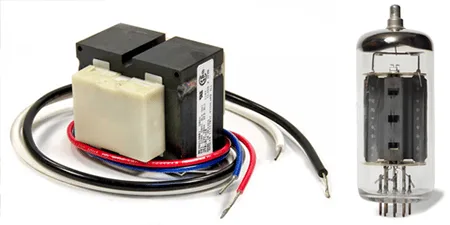
Different amps achieve this task using different means. This is where we have to touch upon amplifier architecture and how it has changed over the years.
You have probably heard about tube amps, solid state amps, and modeling amps. Let’s find out what each of these is, their place in history and why they developed, and what they have to offer.
Tube Amplifiers
Tube amplifiers are among the oldest types of amplifiers. They earned that name because they use vacuum tubes to increase the power of the signal. Aside from adding power, every type of amplifier affects the nature of the tone coming out the speaker
There’s no way around it, so what manufacturers try to do is create a pleasing ‘coloration,’ which is what the change in your tone is called.
The reason why tube amplifiers are so popular is due to their organic sound. On top of that, they offer the most natural form of distortion. What we know as overdrive today, was actually discovered by accident when someone decided to push a tube amplifier past its limits.
When tubes start working hard, they begin to distort the sound. That effect has since become very popular. If you need proof, just take your favorite rock album and have a listen.
The distinction between a natural tube overdrive and its digital counterparts is similar to that between digital music formats and vinyl audio. It’s like comparing the addition of crunchy harmonics to digital clipping.
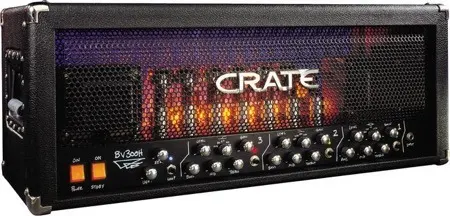
The only real downside to tube amplifiers is their price. To get a moderately decent one, you will have to dish out a fair chunk of money.
Ever since tubes became mainstream again, most brands have released an affordable line of tube amplifiers, but the romanticization has still led to the better choices coming with a premium price tag. However, these are most often designed for home use due to their low power.
Even though they’re coveted, tube amps aren’t that versatile. By default, they only come with a bare bones selection of effects. That’s actually not the issue, though.
What’s far more problematic is extracting good tone from these amps without dealing with loud volume. In order for a tube amp to be in its optimal performance range, those tubes need to be pushed to about 40%-50% power.
Without some type of signal attenuation, you are looking at volume levels too loud for home use. Not only will you deal with the noise police in a matter of minutes, but you run a risk of damaging your hearing. Overall, definitely not fun.
Solid State & Modeling Amps
The next generation of amplifiers are the solid state and modeling units. Contrary to popular belief, all modeling amps are also solid state, but not all solid state amps have modeling architecture. What separates solid state models from tube amps is the fact that tubes have been replaced with transistors.
By doing so, you get a much more efficient amplifier since about half of the energy fed into tubes is converted to heat. Aside from being more efficient, transistors don’t have a performance curve.
Instead, their performance is linear. You will get the same quality of sound at super low volume as you will at medium or high volumes.
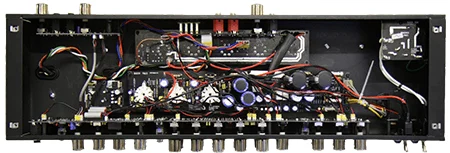
The issue with solid state amps is the color of their tone. Purists will tell you that a solid state amp sounds too ‘clinical and sterile.’ Others call that ‘transparent’ and prefer it.
Sterility was definitely the case when this technology first appeared in the ’80s. These days, the situation is resolved, especially with the advent of amplifier modeling.
Finally, we have modeling amps. A modeling amp uses the same power stage as any solid state unit, hence it is solid state in nature as well. However, modeling amps also have digital sound processors which allow them to store dozens if not hundreds of effects.
The main reason why we don’t see more modeling amps doesn’t necessarily have anything to do with their quality or lack thereof. Rather, guitarists look for rock solid core performance in amps since most of us use a variety of different effects pedals.
In other words, we don’t need to model amps with equalization curves and saturation effects since none of it will be noticeable once we slather our signals in pedal effects.
But modeling amps aren’t just emulators anymore, but more like effects processors. When you are just starting out, going with a modeling amp can be really beneficial.
For one, that amp along with a set of cables and your guitar is all you really need to get going. Modern modeling amps are cheap, loaded with all kinds of distortions, amp emulations, and effects. Companies hire the rock gods to input their custom presets for us lowly mortals.
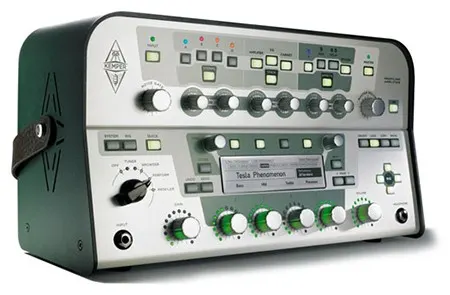
Some are so good that you could fool even the more experienced guitar players with some of those effects. All of this is even truer if you are on a really tight budget. It’s neat too, because you can use presets and on higher end options you can create custom effects and save them for immediate recall.
Much like with any other piece of tech out there, you have good and not-so-good modeling amps. Overall, this type of amp is what you’d generally want to use for home practice. Stage applications call for something a bit more neutral. You also risk falling into the “jack of all trades, master of none” area with these in the lower and mid-tier budget ranges.
Combos & Heads
Another way to classify guitar amplifiers is to divide them between combos and heads. Combos are amps that have an integrated set of speakers.
They are usually compact, which is partially their main purpose. A great thing about running a combo is that you have everything you need in a single box.
As expected, there are also downsides to this concept. For starters, you are often limited to whatever speakers you have in the cab.
There are combos that have a line-out for cabinets, but those are not that common. Of course, this is an issue only if you have to play in a huge venue where it’s necessary to plug yourself into external cabs.
Amp heads are better in this regard. They are fairly compact, usually very powerful, and allow you the luxury of choosing your own cabinets.
Naturally, building a good rig now means that you have the additional expense of getting those cabinets. You can also splurge on a nice amp head and a cheaper cabinet while you save up for a cab with more, better speakers.
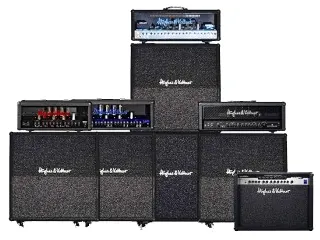
If we were to go deep down the rabbit hole of tone design and preference over time, we would learn that your choice of speakers in a cabinet matters. It is also not so rare to find venues which have cabinets of their own.
This means you can just pack your head and hook it into whatever is available on stage. Unless you have roadies, this is advantageous, and getting too obsessed about the cab is silly when you’re better off practicing more. The uninitiated listener in the crowd can’t tell and won’t be that focused on it anyways.
Choosing between the a combo or a separate head and cabinet will depend on your intended use for that amplifier. If you just need something to practice with at home, a combo is going to fit you like a glove. If you’re fairly sure that stage performance is in your future, you might as well invest into a decent head and cabinet setup, especially for the extra volume projection.
Either way, it’s a must to have an amplifier of any kind. Practicing electric guitar without one can be pretty complicated since you have no real feedback to rely on. Besides, there’s no fun in ‘dry’ playing an electric guitar. It pretty much makes zero sense.
With that said, let’s jump into our top picks for each type of amp in each budget range. Whether you want the best tube amp, best solid state amplifier, big or small amp or budget, we’ve got you covered. You’ll get the best amp for your money. Let’s rock.
